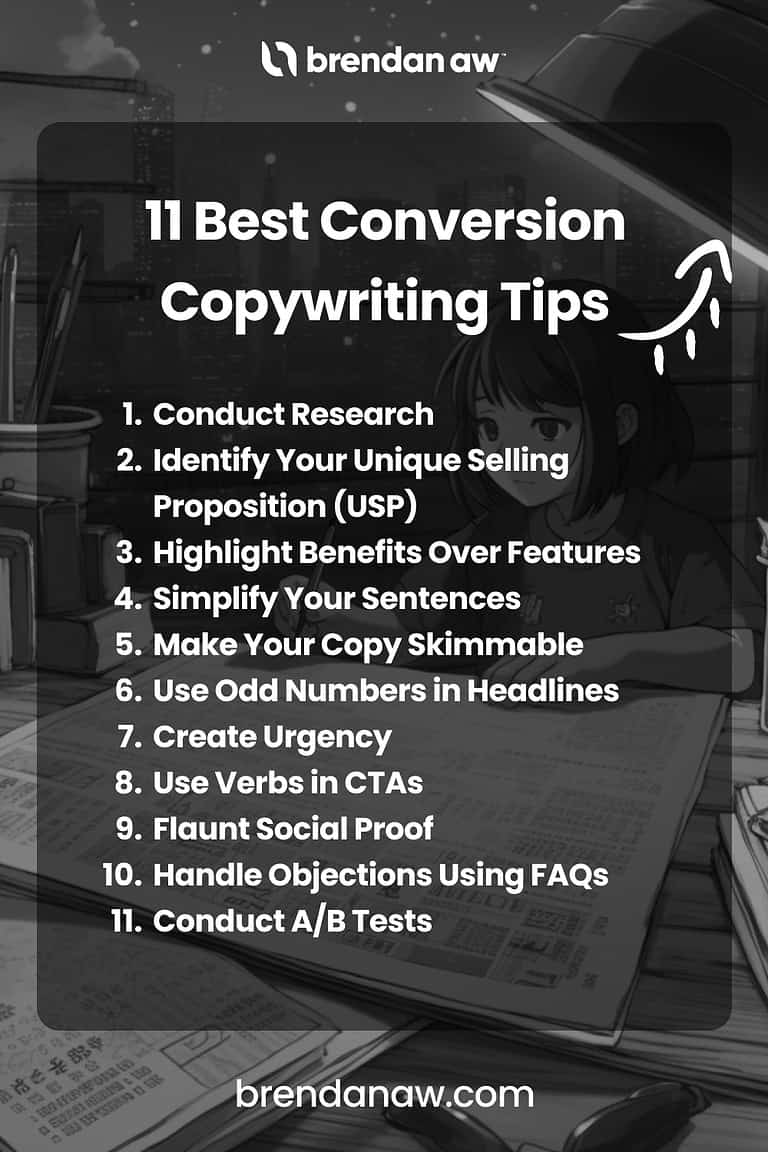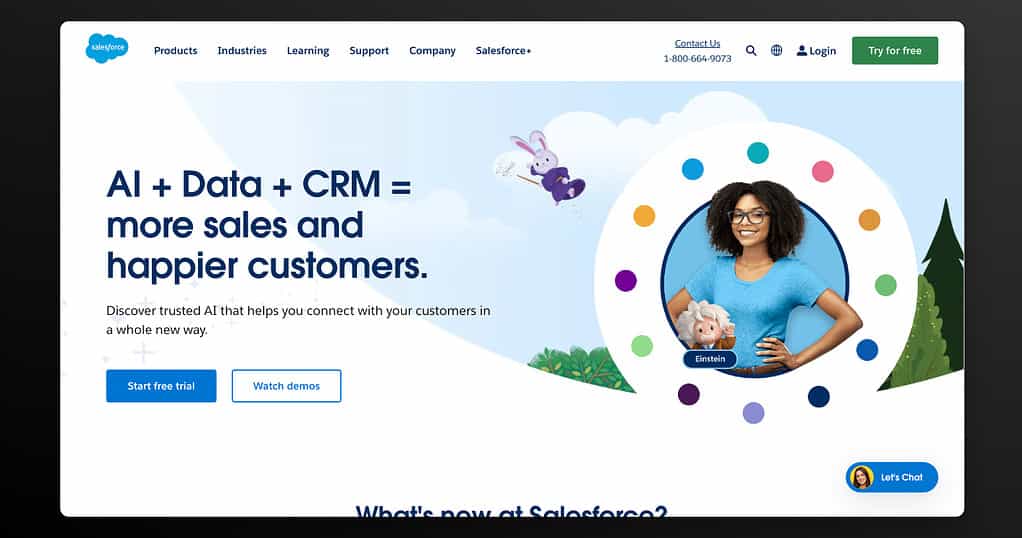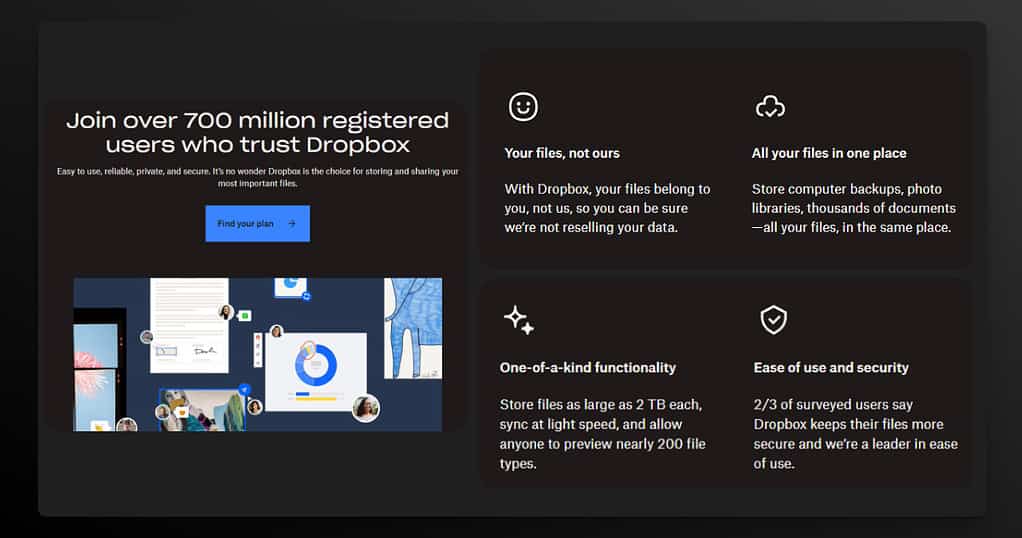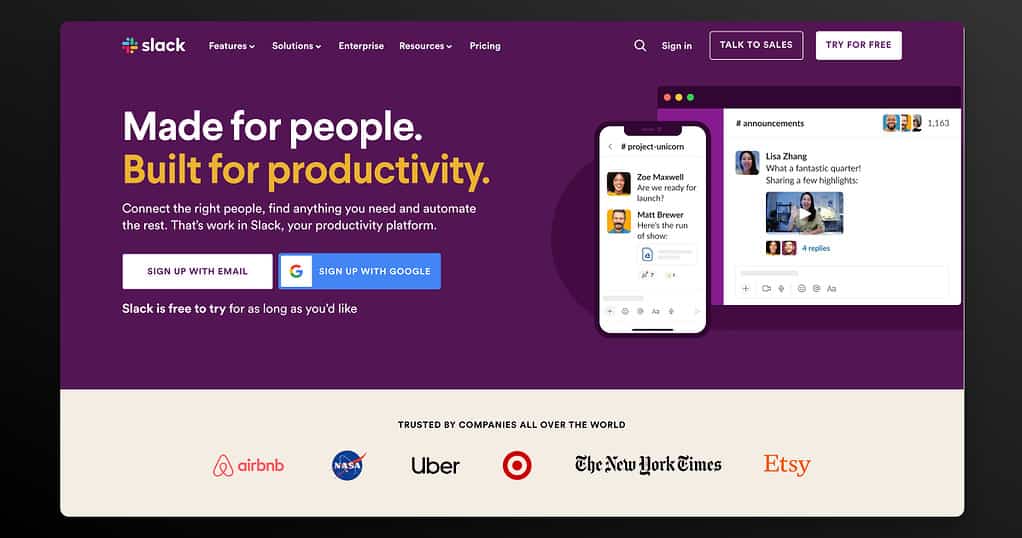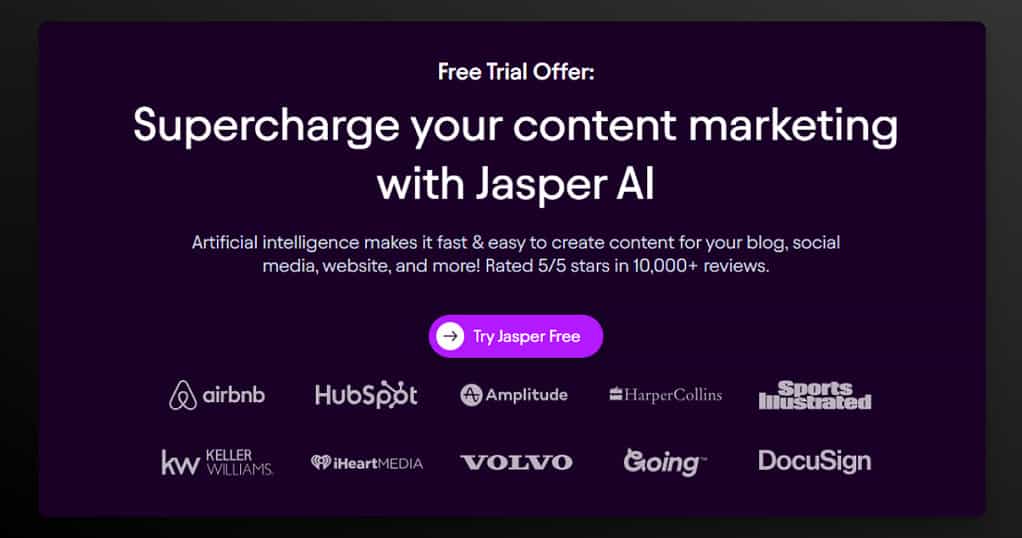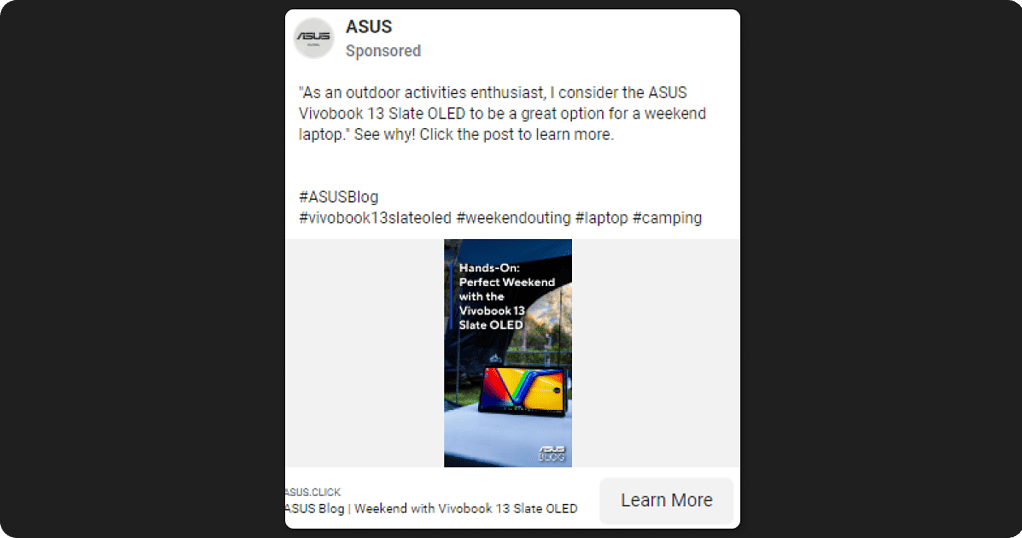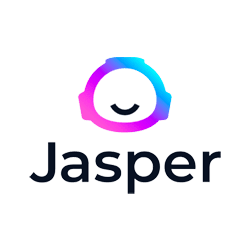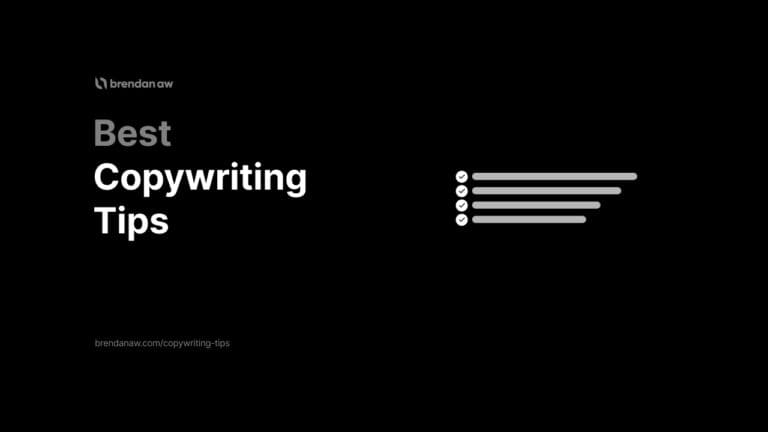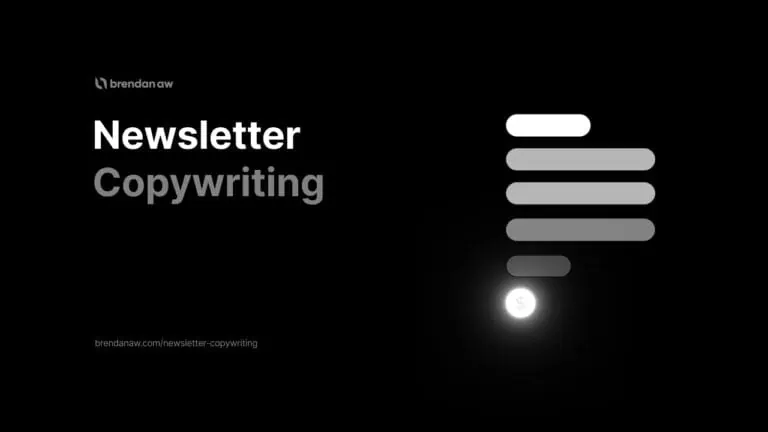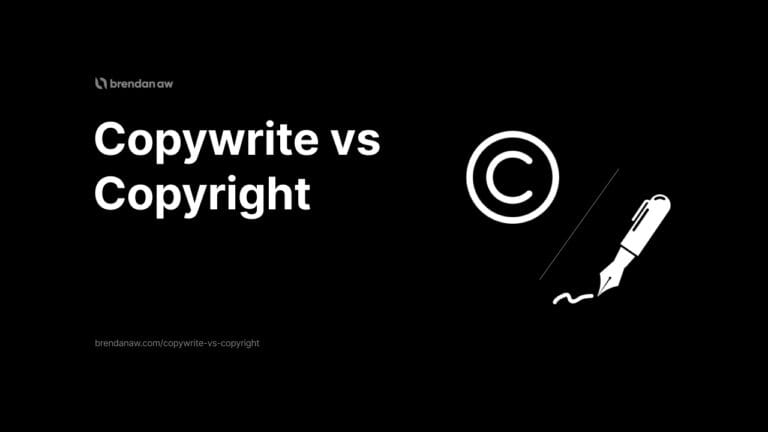Copywriting is the bread and butter of any successful conversion. Adding for testing.
But what you might not know is the ONE type of copywriting that every creator needs to perfect.
It’s what gets you paid.
And the best part is…
You’ll see your conversion rates skyrocket if you master it.
I’m talking about conversion copywriting.
There’s a lot to unpack here.
In this article, you’ll learn:
- What conversion copywriting is
- Tips on how to craft copy that people actually want to read and convert like crazy
- The best conversion copywriting examples
- The step-by-step process of becoming a conversion copywriter from scratch
Ready to become a lean, mean converting machine?
Let’s jump right in.
What Is Conversion Copywriting?
Conversion copywriting is a type of copywriting whose goal is to persuade the reader to take action.
This desired action is typically “buy something.”
But it can also simply encourage customers to take even just one step closer to a sale by:
- Clicking an ad
- Signing up for a newsletter
- Filling out an online survey
What Are the Benefits of Conversion Copywriting?
Businesses benefit from conversion copywriting in many ways.
Here are some major advantages of conversion copywriting:
- Increased conversions: Conversion copywriting uses persuasive language and psychological triggers, leading to higher conversion rates.
- Enhanced customer engagement: Tailored copy that speaks directly to your audience’s pain points and desires will foster stronger customer relationships.
- Better ROI (Return on Investment): You’ll get more out of your marketing spend if your copy is optimized for conversions.
Best Conversion Copywriting Tips
Let’s start with my best conversion copywriting tips you SHOULD apply to any copy.
Regardless of which section you’re writing and the industry you’re in…
- Conduct Research
- Identify Your Unique Selling Proposition (USP)
- Highlight Benefits Over Features
- Simplify Your Sentences
- Make Your Copy Skimmable
- Use Odd Numbers in Headlines
- Create Urgency
- Use Verbs in CTAs
- Flaunt Social Proof
- Handle Objections Using FAQs
- Conduct A/B Tests
1. Conduct Research
Researching is the first and MOST important step in every conversion copywriting process.
The information you’ll gather will tell you:
- Who you’re talking to
- What you should say
- How should you say it
There are two pieces of information you should have before writing a single word of copy…
Customer information and market competition.
Customer Information
Start by identifying who you’re writing for.
So here’s a list of questions you need to ask to know your customers:
- What are my customers’ demographics? Identify their age, gender, location, income, and highest educational attainment.
- What are my customer’s problems and pain? The problem is what causes pain. These two are distinct.
- Which stage in the customer’s journey are they in? You won’t approach a cold lead like a loyal customer.
This information will help you understand your customers better than your competitors.
And if you can speak to your audience’s needs more effectively, you have better chances over those who use generic or less targeted copy.
Market Competition
Knowing who your target audience is isn’t enough.
You have to know who you’re playing against.
Here are my tips on how you should do your market research on the competition:
- Do a basic Google search: Open your browser and search “top [your niche] companies” (e.g. “top watch companies”)
- Study what they’re doing: Take note of their offers, examine their copies, and see what’s working (and not) for them.
This is where most people stop their market research.
But if you want to gain game-changing insights, you HAVE to dig deeper.
Here are my hotspots for thorough research:
- Product Reviews (Amazon, PlayStore, App Store): Filter the reviews to show only the 3s or 4s. These reviews hit the sweet spot between what customers liked and what they didn’t. Focus on the things that docked their score.
- Online Forums and Groups: Join Facebook groups, Quora discussions, or Reddit threads. These are great places to get the unfiltered thoughts of people. I recommend focusing on one platform based on your niche. (e.g. If you’re writing in the real estate industry. Facebook groups will be your best option.)
- Online Surveys: Create surveys to gather insights from your target audience and potential customers. You can get creative with stylish forms using Typeform. And use polls on social media for quick responses like yes/no answers or comparisons.
2. Identify Your Unique Selling Proposition (USP)
Your USP is the benefit that makes your product or service stand out.
Knowing your USP is important because it tells you why your customers should choose you over your competition.
This will serve as your blueprint for writing your copy.
“So, Brendan, how can I identify my USP?”
Here’s a simple template to recognize your unique value proposition:
- Formula: I help [audience] [goal] with [unique solution]
- Example: I help aspiring content creators grow their creator businesses with insider tips as a former Marketing Manager.
3. Highlight Benefits Over Features
First, I want to make this clear. Features and benefits ARE NOT the same.
The feature is what your product does.
And the benefit is what your customers will get from your product.
Strong copy highlights benefits more than the features.
I’ve said this many times before, but I’ll say it again…
The only thing that matters is BENEFITS.
Period.
I find the “So What?” copywriting framework useful in pinpointing the advantages of each of your product’s features.
Once you have identified the benefit, use “so you can” to connect that feature to the benefit it brings your customers.
Here are a couple of examples:
| Feature | Benefit | Copy |
|---|---|---|
| 24/7 Customer Support | Peace of mind that you’ll get expert help when something goes wrong with your website. | We offer 24/7 customer support so you can have peace of mind knowing expert help is available for your website issues. |
| One-on-One Coaching | Stay accountable and get personalized feedback for faster growth. | We offer one-on-one coaching so you can stay accountable and receive personalized feedback for faster growth. |
| Weekend Training Sessions | Easier to align with a busy work schedule. | We have weekend training sessions so you can stay consistent despite your busy work schedule. |
4. Simplify Your Sentences
The average American reads at the 7th to 8th-grade level. So, it’s important to keep your copy clear and simple.
Better yet, write as if you’re explaining it to a 5th grader.
This encourages you to break complex concepts down and stay on topic.
This can be lower or higher, depending on how knowledgeable your audiences are on a certain topic.
How can you simplify your sentences, you ask?
- Use active voice
- Avoid complex words
- Cut down adverbs
- Use the free Hemingway App
5. Make Your Copy Skimmable
People’s attention spans are getting shorter…
And no one reads every word nowadays.
Conversion copy needs to be easy to glance over quickly.
Here are my tips to keep your copy skimmable:
- Break your sentences (if it’s appropriate). I hit a line break every 1 to 2 sentences.
- Separate sections using sub-headers
- Use one comma MAX per sentence
- Add bullet points to list important statements
- Embed photos and videos
- Bold important words
6. Use Odd Numbers in Headlines
Headlines with figures and data exude credibility.
But you can take this advice to another level by using odd numbers.
Oddly enough, our minds favor odd numbers in titles.
Here are a few reasons why.
- Believability. Odd numbers suggest that the content is based on available information rather than to achieve roundness.
- Interest. Even numbers create symmetry, but odd numbers create interest and are more memorable.
- Psychological appeal. Our brains love odd numbers as they give the impression of logical structure.
A Marketing Institute headline CTR study also found odd-numbered headlines had 20% higher click-through rates than even-numbered ones.
(why do you think I gave 11 tips in this article…)
7. Create Urgency
My BEST advice for creating strong body copy is to draw attention to the advantages of your good or service.
You should support the claims in your title in the body of your copy.
Aside from the benefits, encourage the reader to take action with urgency.
Use words like:
- For a limited time only
- Once in a lifetime
- Final sale
- Instant
8. Use Verbs in CTAs
There are a few common denominators between great calls-to-action.
They’re all:
- Verb-oriented: Start with verbs such as “get,” “learn,” and “go.” This tells your customers exactly what you want them to do. For example, “Get my free course,” “Learn to sing now,” and “Go check out.”
- Concise: Stick to fewer than five words, such as “
Get my digital marketing course for free”→ “Get my free course.” - Benefit-focused: Focus on the value the user will receive, like “Get instant access,” rather than what they need to do, such as “Fill out this form.”
Want to see a great CTA in action?
Take a look at Salesforce’s landing page:
This has great call-to-actions because it’s:
- Action-oriented. It starts with the verb “Start.”
- Short. It’s less than five words.
- Value-driven. Instead of saying “Sign up now,” they used “Start free trial.”
9. Flaunt Social Proof
Social proof in copywriting is a section wherein you establish your credibility using:
- Customer reviews
- Statistics
- Client testimonials
It’s a fantastic approach because people are social beings.
We’re influenced by the actions or opinions of others, which validate our own decisions or behavior.
That’s why social proof can be so powerful.
But here’s the thing…
Novice copywriters will ask for client feedback. Then, they copy-paste the review to their website.
Word for word.
Don’t get me wrong. Having any review is far better than having none.
But if you want the best results, here’s a simple trick…
Bold some words to draw attention to the key points.
This will make your testimonials easier to browse.
“John is super cool.
He never misses any deadlines and always goes above and beyond with our project KPIs.
It’s a breeze working with this man.”
And don’t be afraid to reword a customer statement if you think it will improve it.
But don’t just randomly twist other people’s words to make you look cooler. Or add things that weren’t there before.
The new version should reflect the spirit of the original comment.
And ensure you get the reviewer’s permission and approval before posting.
10. Handle Objections Using FAQs
What I love about FAQs is it’s a fantastic tool for dealing with objections preemptively.
You’ve given a complete breakdown, but they are still on the fence.
That’s a perfect opportunity to save a sale using FAQs.
You can add product-specific questions like:
- Does [your product] have a free trial?
- Can I get a refund if I’m unsatisfied with [your product]?
- What makes [your product] different from others in the market?
- Can I integrate [your product] with [other popular products]?
I’ve included FAQ sections since the very first article on my site.
And I’ve picked up some tips along the way.
Here are some of them:
- Talk in the customer’s POV.
- Keep answers to the point.
- Avoid jargon
- Regularly update your FAQs (ideally every three months)
11. Conduct A/B Tests
The only way to be sure any element of conversion copywriting works is through A/B testing.
Here’s how to do it.
- Identify what to test: Choose the specific element of your copy to test.
- Create two versions: Develop a control (Version A) and a variant (Version B) of your copy.
- Split your audience: Divide your audience into two random, similar groups.
- Launch your test: Run the test simultaneously for both groups.
- Analyze the results: Evaluate which version performed better based on relevant conversion metrics.
- Implement the winning version: Use the better-performing version in your actual copy.
- Repeat: Continually test and optimize different elements.
Don’t make changes on a whim. Or because you “felt” it might work better.
Do the tests. Look at the data. Make a decision.
It’s a time-consuming process, but that’s what you need to do to optimize your copy.
Conversion Copywriting Examples
Here are some real-life examples of copies to take inspiration from.
Dropbox
Dropbox’s landing page is an excellent example of copy optimized for conversions.
Why it works:
- The headline uses social proof: Dropbox needs to gain its users’ trust. Especially since their users entrust the platform with their private files. The best way to gain credibility and trust is to add social proof.
- Communicates what the readers want: The target audience demands easy, reliable, and secure file storage.
- Benefits are attached to every feature: Each feature emphasizes the advantage it provides to the user.
Slack
Slack’s landing page is an excellent example of copy that speaks directly to your target market.
Why it works:
- Calls out their customer: Their catchy headline communicates who their product is for.
- Communicates the following steps: The call-to-action (“Sign up”) clarifies what the user should do next.
- Preemptively handles objections: The phrase “Slack is free to try as long as you’d like” is strategically placed under the CTA. This addresses cost concerns, encouraging worry-free sign-ups.
Jasper AI
Jasper is one of the best AI copywriting software.
It’s no surprise that they have superb landing page copy.
Why it works:
- Benefit-driven headline: The headline promises customers they will supercharge their content marketing using Jasper AI.
- Dual-purpose subheading: The subheading elaborates on what the software is about. And acts as the software’s social proof as well.
- Clear & concise CTA: It’s obvious what the user must do next. Try it out for free.
Asus
Asus uses short but curiosity-invoking copies, perfect for social media advertisements.
Here’s an example.
Why it works:
- Curiosity-invoking copy: The final words, “Click the post to learn more,” arouse curiosity and exploration.
- Identification with the audience: The opening phrase establishes a connection with the reader who shares the same interest. This draws the reader’s attention, making them feel the message is personalized.
- No fluff: This Facebook ad copy is short and to the point. And it does what it needs to do: redirect people to the Asus website.
Bluehost
Bluehost is one of the most popular web hosting providers.
Let’s take a look at their landing page conversion copy.
Why it works:
- Objection-handling headline: Web hosting shoppers dislike complex WordPress integrations. Bluehost addresses this issue right away.
- Social proof in the preheader text: Bluehost is one of the only three web hosting providers recommended by WordPress.org. And they made sure to leverage that social proof right off the bat.
- Verb-oriented CTAs: If you browse their landing page, you’ll notice their calls-to-action begin with an action verb. (e.g., Start building, Start Selling, Browse Tools, Learn More).
How to Become a Conversion Copywriter?
You can practice writing copies for your brand.
But if you’re new and have a small audience, it’s hard to measure your improvements.
So many aspiring content creators practice their copywriting skills for other businesses first before using them to grow their own.
If that interests you, here’s a step-by-step guide on how to become a conversion copywriter.
1. Learn the Fundamentals
I call this the input phase, where you consume information that will come in handy later.
Read copywriting books. Take Marketing 101 courses. Study human psychology and persuasion.
And most importantly, expose yourself to a lot of copy by:
- Visiting swiped.co for copy inspirations.
- Looking at advertisements in the Facebook ad library.
- Subscribing to newsletters.
- Reading newspapers and magazines.
- Hanging around on money Twitter (gonna be “X” soon).
2. Write Some Copy
There’s a common beginner’s mistake I don’t want you to make…
Delaying your writing phase because you think you aren’t prepared for it yet.
Spoiler alert: You’ll never feel fully prepared.
Just start writing.
I’m a firm believer that theory without practice is nonsense.
“But, Brendan, I’m only getting started. I have no clients, so how can I create copies?”
Fair enough. Here’s what you should do.
- Pick a copywriting niche.
- Select a company in that industry that you’d like to work for.
- Create copy for them (e.g., email sequence, social media ad, landing page, etc.)
3. Compile Your Samples in a Portfolio
The next step is to build your copywriting portfolio with at least 3-5 samples.
You have two choices for sharing your work with potential clients:
- Use Google Drive
- Host your own portfolio website
One is free, and the other is at a reasonable cost.
Which one is better, you ask?
That depends.
A GDrive portfolio is quick, easy, and free to create. You can start attracting copywriting clients IMMEDIATELY.
But having a portfolio website is better…
The competition in copywriting is at an all-time high.
That’s why having a personal website will make you stand out.
It’s also perfect if you decide to start affiliate marketing in the future when you write blog posts and promote products.
I’d always recommend getting the best web hosting for affiliate marketers and a domain name for just a few bucks per month.
4. Start Looking for Clients
Once you have samples that prove you can do the job, start looking for copywriting opportunities.
Many copywriters hunt for gigs on websites like Fiverr and Upwork.
There are lots of opportunities on those platforms…
But the competition can be overwhelming if you’re starting out.
Don’t worry.
There are many hotspots to find copywriting clients that are less competitive.
Local small businesses and marketing agencies are just a couple of them. You can either work for them full-time or on a per-project basis as a freelancer.
Conversion Copywriting (FAQs)
What Is the Difference Between Direct Response Copywriting and Conversion Copywriting?
The main difference between direct response copywriting and conversion copywriting is the reader’s targeted response time.
In direct-response copywriting, the goal is to encourage the audience to do something right after reading the copy.
In conversion copywriting, the response doesn’t have to be as immediate as DRC.
What Is the Most Common Mistake Beginners Make When Learning Conversion Copywriting?
The most common mistake people make when learning to copywrite is not writing immediately.
Many people wait until they know what they’re doing before they start something.
But the more you write copy, the better you’ll get.
What Exactly Is Conversion Copy?
Conversion copywriting is copy that’s specifically designed to persuade readers to take a particular action. To sign-up, say yes to an offer, or make a purchase.
It can be done on:
• Product pages
• Homepages
• Long-form landing pages
It doesn’t just inform your audience…
It gets them to take action.
How Can I Use Conversion Copy in My CTAs?
You’ll want to ensure your calls-to-action (CTAs) are specific, compelling and actionable.
Rather than writing something generic like “Sign Up,” personalize it to something aligning with your value proposition like “Claim Your Free E-book.”
This shift and user analytics can lead to a noticeable revenue increase.
What Is a Value Proposition in Conversion Copywriting?
A value proposition in conversion copywriting is a clear, compelling message that outlines why a customer should choose your product over your competitors.
It highlights the benefits and convinces prospective customers to accept your offer.
Can Experimentation Benefit My Conversion Copy?
Yes, experimentation will benefit your conversion copy as it’s the key to optimizing conversion rates. You should constantly test and tweak your copy to see what resonates best with your audience.
Use as a validation method.
If a change leads to more sign-ups or sales… It’s a strong conversion, so double down.
Should I Personalize My Conversion Copy?
Yes, personalizing your conversion copy can significantly improve user experience, brand loyalty and conversion rates.
There is absolutely no reason why you shouldn’t be doing it.
How Can I Use a Demo in My Conversion Copywriting?
Nothing quite seals the deal more than a demo highlighting the benefits of your product or service.
Here are a few tips:
• Tailor the demo to your customer’s pain points
• Focus on the benefits, not the features
• Use storytelling by showing real-life case studies
• Use social proof
• Keep your message concise and impactful
End with a compelling CTA that entices users to sign up and experience the product themselves.
As always, test various approaches to see what works best.
What Is the Best Framework for Writing Effective Conversion Copy?
The “So, what?” copywriting framework is, in my opinion, the best framework for writing effective conversion copy.
It forces you to handle potential customer objections and focus on the benefits of your product or service.
If you don’t need to ask yourself, “So, what?” means you’ve done your job.
To Sum It Up
Here’s a quick recap.
Conversion copywriting is a type of writing that persuades action.
Businesses can benefit from conversion copywriting in several important ways, including:
- Increased conversions
- Enhanced customer engagement
- Improved ROI for marketing
You also have the roadmap to becoming a copywriter that specializes in conversions.
But you won’t get very far if you don’t put the advice and the strategy I gave you into action.
Just take one step at a time…
I’ll see you on the other side.


